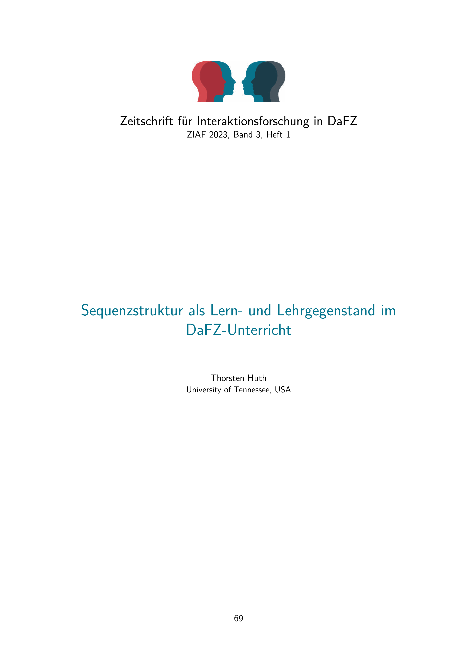Sequenzstruktur als Lern- und Lehrgegenstand im DaFZ-Unterricht
From a social-interactional research perspective, this paper focuses on the sequential organization of social interaction. What are adjacency pairs, how do they work, what overall view of language do they reflect, and in what ways are they relevant as concrete objects of learning and teaching in Ger...
Αποθηκεύτηκε σε:
| Εκδόθηκε σε: | Zeitschrift für Interaktionsforschung in DaFZ |
|---|---|
| Κύριος συγγραφέας: | |
| Μορφή: | Artikel (Zeitschrift) |
| Γλώσσα: | German |
| Έκδοση: |
Philipps-Universität Marburg
2023
|
| Θέματα: | |
| Διαθέσιμο Online: | Διαθέσιμο Online |
| Ετικέτες: |
Προσθήκη ετικέτας
Δεν υπάρχουν, Καταχωρήστε ετικέτα πρώτοι!
|
| Περίληψη: | From a social-interactional research perspective, this paper focuses on the sequential organization of social interaction. What are adjacency pairs, how do they work, what overall view of language do they reflect, and in what ways are they relevant as concrete objects of learning and teaching in German as a foreign or second language? Based on these questions, this paper illustrates that the active projection of which social actions may be relevant next in the immediate progression of social interaction with others consitutes a central aspect of the notion of interactional competence. Empirical studies show that the sequential organization of interaction is not only learnable but also teachable from the very beginning. This provides the basis for incorporating sequence structure systematically into the teaching of foreign or second languages. |
|---|---|
| DOI: | 10.17192/ziaf.2023.3.1.8572 |
 Publikationsserver
Publikationsserver